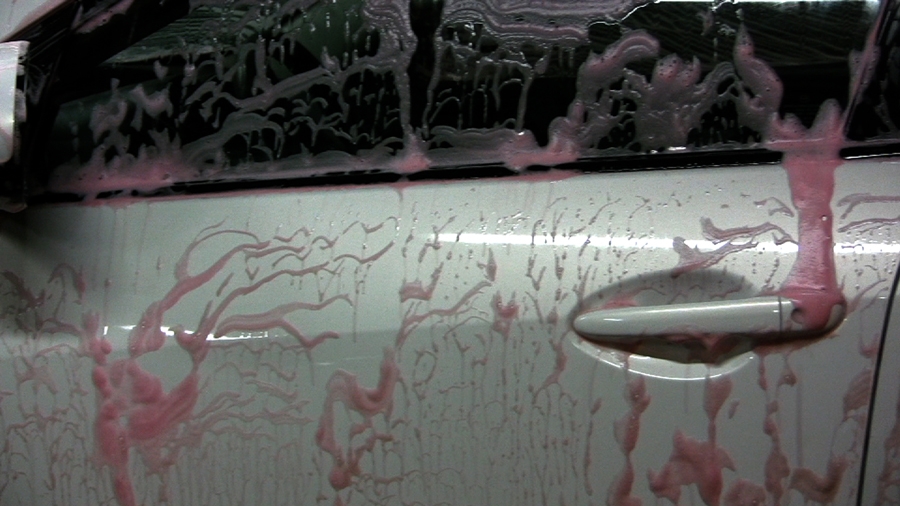Commensurate with her transnational bona fides – born in New Jersey, raised in East Jerusalem, educated partly in Oslo, currently resident in Berlin – Jumana Manna’s work considers Palestinian experience through broadly resonant categories such as agency, self-mythologising and machismo, without mitigating the specific urgencies that distinguish it. An explication of desire and possession, her installation at SculptureCenter extends the subtlety of her already keen analyses. The show pairs Blessed Blessed Oblivion (2010), a video shot in car repair shops and gyms frequented by disaffected Palestinian youths in East Jerusalem, with a group of sculptures resembling architectural fragments that clearly reference the fabric of that oft-conquered city.
Inspired by Kenneth Anger’s film Scorpio Rising (1963), a fast-cutting portrait of biker culture in LA, Manna’s film follows Ahmad, a blazingly sultry petty thug, as he pumps iron, smokes hash and describes minor thefts and incidents of domestic abuse. Passing visual references to the Palestinian struggle – a copy of an Israeli police report, the poster of a martyr – suggest the exigencies that differentiate life in Manna’s East Jerusalem from Anger’s LA, but what’s striking is their similarities. Both films focus on male bodies and tokens of masculinity like watches and bikes, and the protagonists in each idolise figures such as James Dean or American muscle men, avatars of toughness as much as of rebellion. Ahmad’s acting out suggests a stifling impotence and the complementary need to appear powerful.
By noting that resistance becomes eroticised and is meaningful, in part, for its sexualised charge, Manna reveals an underlying, and nearly universal, connection between efficacy and self-worth
By noting that resistance becomes eroticised and is meaningful, in part, for its sexualised charge, Manna reveals an underlying, and nearly universal, connection between efficacy and self-worth. The sculptures, constructed mostly from paving stones or egg cartons slathered with plaster, and variously titled after Israeli politicians or the nineteenth-century British explorers who mapped the region, link the projection of masculine identity to broader histories of colonialism and occupation, and to the national myths of righteousness and enlightenment that bolster them. The schematic look and equivocal title of two oversize discs (Roman or Byzantine Coin, 2014) furthermore suggest that the past is fungible and that value does not rest in things a priori but is imposed through the distorting prejudices of interpretation.
Similar to the objects, those same outside narratives have rendered the youths that Manna films as empty vessels, figures forced to play at being manly. But as the camera lingers on Ahmad’s full lips and long curly hair, Manna seems seduced. Playing on his comeliness, she draws her viewers into the complex dynamics of desire, projection, effacement and possession that underlie the current social and political consequences of which Ahmad’s life is symbolic.
This article was first published in the Summer 2014 issue
